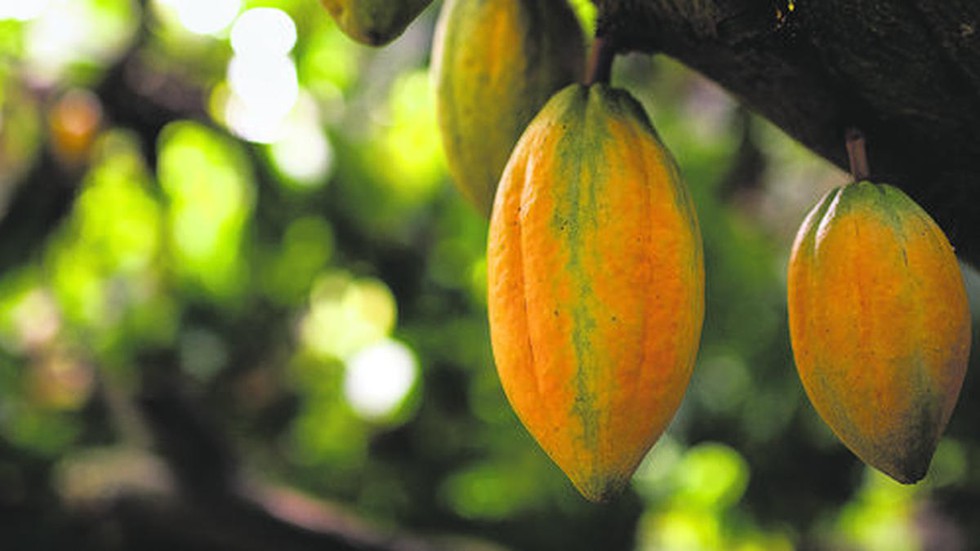
About Cocoa Tree:
- It is an important plantation crop grown for chocolates around the world. It is known as a crop of humid tropics and is native to the Amazon basin of South America.
- Cocoa trees grow about 20 degrees north and south of the equator in regions with warm weather and abundant rain, including West Africa and South America.
- Required climatic conditions:
- It can be grown up to 300 m above mean sea level.
- Rainfall:It requires an annual rainfall of 1500-2000 mm.
- Temperature:The temperature range of 15°-39°C with optimum of 25°C is considered ideal.
- Soil:It requires deep and well-drained soils. The majority of the area under Cocoa cultivation is on clay loam and sandy loam soil.
- It grows well in the pH range of 6.5 to 7.0.
- Shade requirement: It evolved as an under-storey crop in the Amazonian forests. Thus commercial cultivation of cocoa can be taken up in plantations where 50 per cent of light is ideally available.
- Major producing regions in the world:About 70 per cent of the world’s cocoa beans come from four West African countries: Ivory Coast, Ghana, Nigeria and Cameroon.
- In India, it is mainly cultivated in Karnataka, Kerala and Tamil Nadumainly as intercrop with Arecanut and Coconut.
2. Digital Agriculture Mission
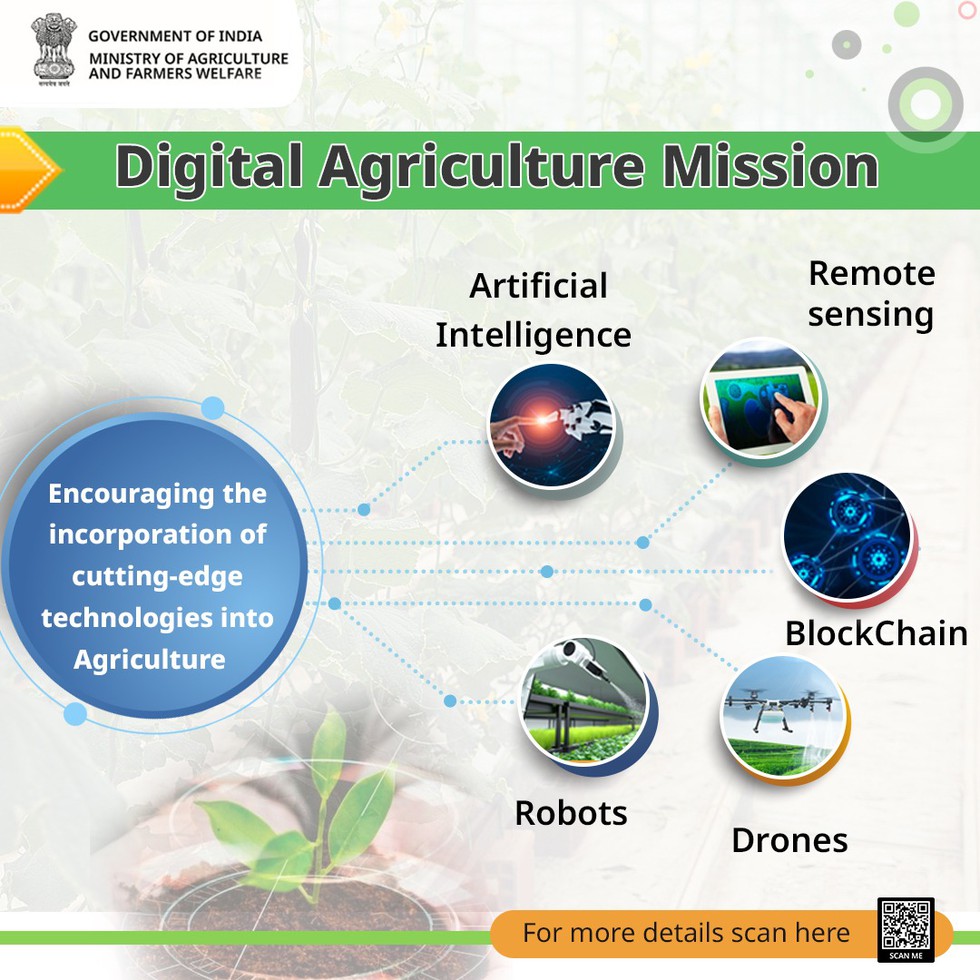
About Digital Agriculture Mission:
- It is conceived as an umbrella scheme to support digital agriculture initiatives, such as creating Digital Public Infrastructure, implementing the Digital General Crop Estimation Survey (DGCES), and taking up other IT initiatives by the Central Government, State Governments, and Academic and Research Institutions.
- Three major components of DPI are envisaged under the Digital Agriculture Mission: AgriStack, Krishi Decision Support System (DSS) and Soil Profile Maps.
- Each of these DPI components will provide solutions that will allow farmers to access and avail of various services.
- AgriStack: The farmer-centric DPI AgriStack consists of three foundational agri-sector registries or databases: Farmers’ Registry, Geo-referenced Village Maps and Crop Sown Registry, all of which will be created and maintained by state/ UT governments.
- Farmers’ Registry: It will be given a digital identity (‘Farmer ID’) similar to Aadhaar, which will be linked dynamically to records of land, ownership of livestock, crops sown, demographic details, family details, schemes and benefits availed, etc.
- Pilot projects for the creation of Farmer IDs have been carried out in six districts — Farrukhabad (Uttar Pradesh), Gandhinagar (Gujarat), Beed (Maharashtra), Yamuna Nagar (Haryana), Fatehgarh Sahib (Punjab), and Virudhunagar (Tamil Nadu).
- Crop Sown Registry: It will provide details of crops planted by farmers. The information will be recorded through Digital Crop Surveys — mobile-based ground surveys — in each crop season.
- Geo-referenced Village Maps: It will link geographic information on land records with their physical locations.
- Krishi DSS: It will create a comprehensive geospatial system to unify remote sensing-based information on crops, soil, weather and water resources, etc.
- This information will support crop map generation for identifying crop sown patterns, droughts/flood monitoring and technology/model-based yield assessment for settling crop insurance claims by farmers.
- Soil Profile Maps: Under the Mission, detailed Soil Profile Maps (on a 1:10,000 scale) of about 142 million hectares of agricultural land are envisaged to be prepared. A detailed soil profile inventory of about 29 million ha has already been completed.
3. Digital Bus initiative
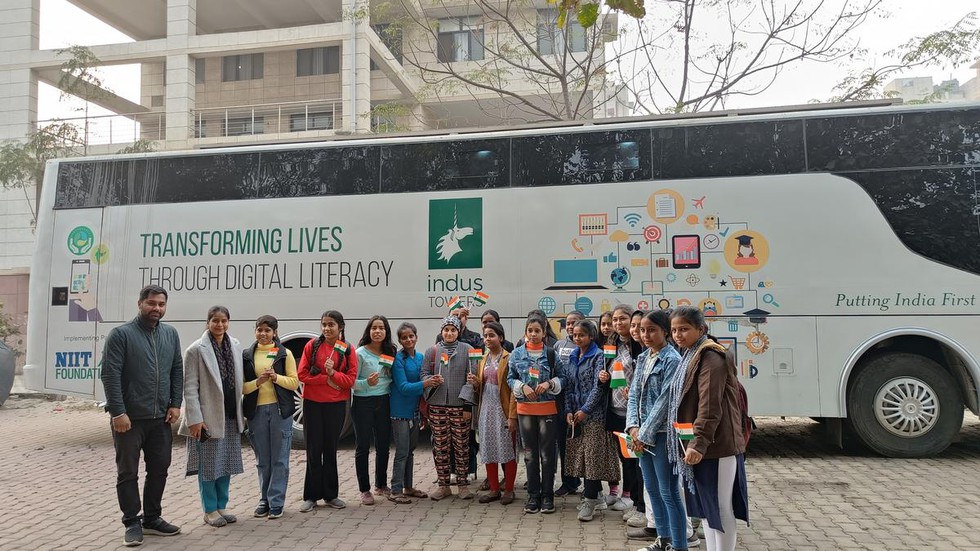
About Digital Bus initiative:
- It is a joint venture between the National Digital India Mission and the NIIT Foundation.
- It was started in 2017, aims to take technology to remote areas and also foster innovation and offer new opportunities and ensure that every community is able to thrive in the digital age.
- Objective
- Reducing the Digital divide for those living in remote areas
- Providing Linkages to Government programs and initiatives
- Enhancing interest levels in learning
- Introducing the multidisciplinary approach to education
- Encouraging collaborative learning
- Developing interpersonal skills
- Providing awareness of technology amongst the rural community
- Providing equal opportunities for rural youth
- Features of buses: These are solar-powered, 5G-enabled and fully furnished classrooms with computers, Internet and camera/video capabilities, with preinstalled e-courses, all available free of cost.
- Focus of the courses: These courses focus on fundamental functions like using e-mail, the Internet and applications.
- It offers a career programme to help the beneficiary look for a job in the nearest city of town.
4. Thanjavur Veena
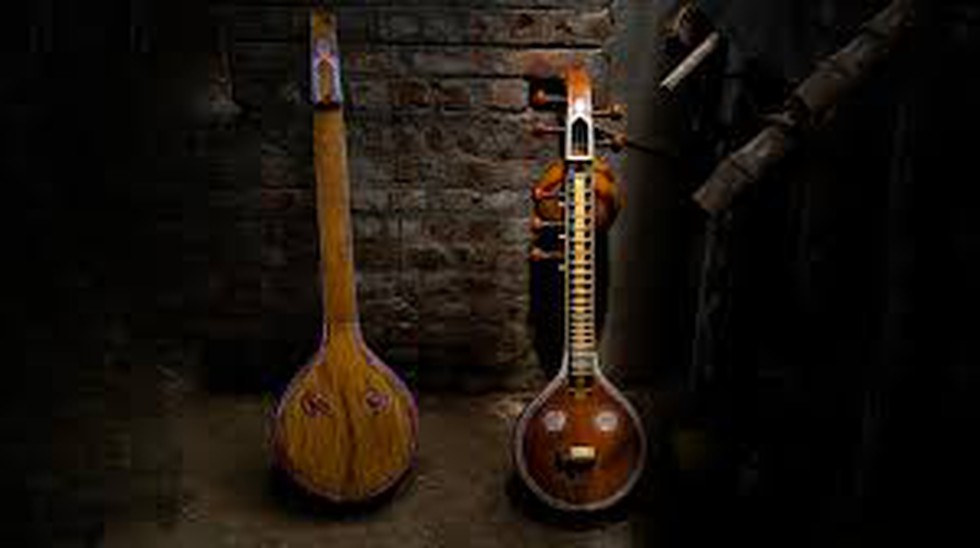
About Thanjavur Veena :
- The Thanjavur veena is an Indian instrument and has an interesting construction.
- They are of two types viz. the "Ekantha Veena" and "Sada Veena'.
- “Ekantha Veena" is carved from a single block of wood, while “Sada Veena” has joints and is carved in three sections namely resonator, neck and head.
- The veena has 24 fixed frets (Mettu) so that all ragas can be played.
- It is made of fresh bark from a Jack Fruit Tree. The tree bark is forced to undergo several rounds of testing before being finalized for usage.
- The work involves making the resonator ( kudam), the neck ( dandi) and a tuning box — the three integral parts of a veena.
- It takes up to 15-20 days, to get the finished product. The wood gets cut, intricately carved, shaped, and assembled.
- Types
- There are four types of veena. While Rudra veena and Vichitra veena are popular in Hindustani classical music, Saraswati veena and Chitra veena are used in Carnatic classical music.
- Thanjavur is the only place where Saraswati veena is made. Saraswathi, the goddess of learning and arts, is portrayed with a veena.
5. Key facts about Namibia
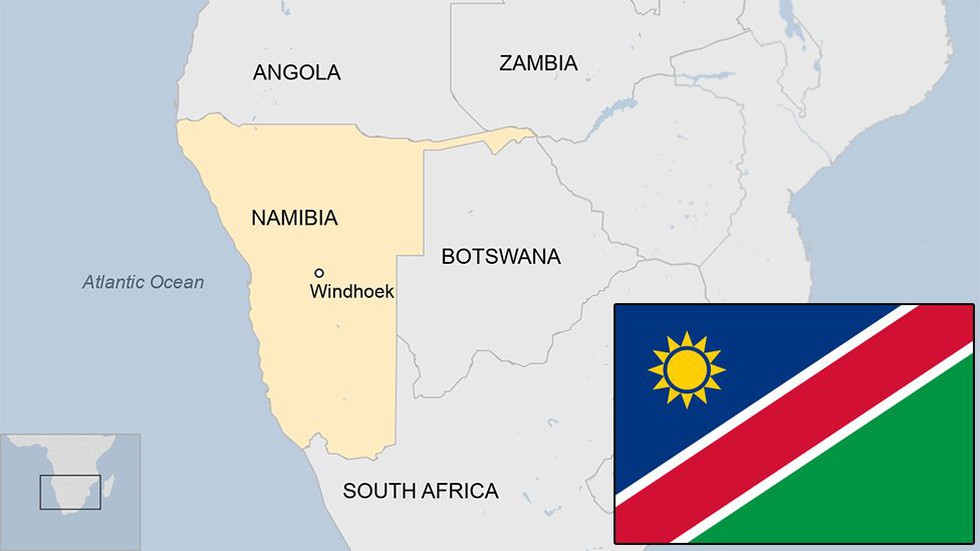
About Namibia:
- Location: It is located on the southwestern coast of the African continent in the Southern and Eastern Hemispheres of Earth.
- Namibia shares a border with the surrounding countries of South Africa, Botswana, Zimbabwe, Zambia and Angola. The Atlantic Ocean borders it to the west.
- It has a diverse environment that is home to deserts, marshlands, savannas, mountains, and river valleys.
- Namibia's extent can be divided into three topographic zones from west to east.
- The coastal Namib Desert runs along the country's coast on the Atlantic Ocean. It gives way to the Central Plateau to the west with the Kalahari Desert located further inwards.
- Rivers: The only permanent rivers are the Kunene, the Okavango, the Mashi and the Zambezi on the northern border and the Orange on the southern.
- Mountain: Brandberg, also known as Mount Brand is Namibia’s highest mountain and is located along the plateau’s western escarpment.
6. Law Commission of India
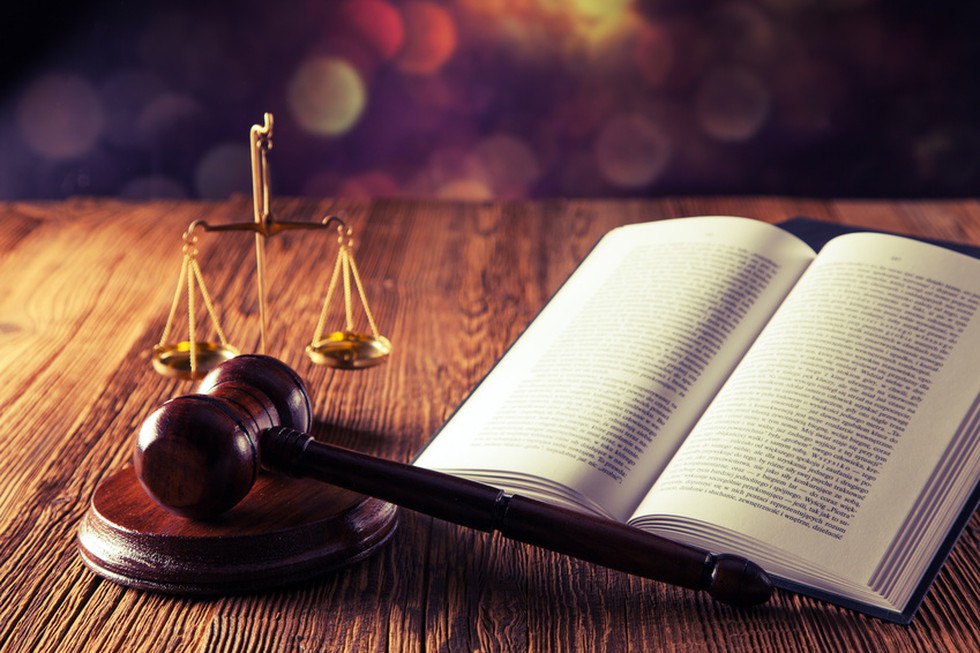
About Law Commission of India:
- It is a non-statutory bodyand is constituted by a notification of the Government of India, Ministry of Law & Justice.
- It is constituted with definite terms of reference to carry out research in the field of law, and the Commission makes recommendations to the Government (in the form of Reports) as per its terms of reference.
- It functions to the Ministry of Law and Justice as an advisory body.
- History:
- The first pre-independence law commission was established in 1834 by the British Government in India.
- It was established by the Charter Act of 1833and was chaired by Lord Macaulay.
- The first Law Commission of independent India was established in 1955 under the chairmanship of the former Attorney General for India, C. Setalvad.
- This Commission was created for a period of three years, and this practice has persisted ever since then, resulting in the reconstitution of Law Commissions every three years via executive orders.
- How is the Law Commission Created?
- A law commission is created when the Union government passes a resolution for the formation a new commission after the expiry of the last one.
- After the resolution is passed, and the President gives assent to it, the government has the liberty to choose the chairperson for the new commission.
- Functioning:
- The Commission works on projects based on the references received from the Central Government and/or from the Supreme Court and High Courts.
- At times, keeping in view the importance of the subject matter, the Commission initiates studies on specific subjects, suo moto.
- The Commission is aided in its work on the legal side by the law officers of the Indian Legal Service and on the administrative side by the officers of the Central Secretariat Service.
- The Commission always welcomes suggestions from any person, institution, or organization on the issues under consideration of the Commission.
- Reports:
- The Reports of the Law Commission are laid in Parliament from time to time by the Department of Legal Affairs, Ministry of Law and Justice, and forwarded to the concerned administrative Departments/Ministries for implementation.
- They are acted upon by concerned Departments/Ministries depending on the Government’s decision.
- Invariably, the reports are cited in Courts, Parliamentary Standing Committees, and academic and public discourses.
7. India Semiconductor Mission (ISM)

About India Semiconductor Mission (ISM):
- ISM is a specialized and independent Business Division within the Digital India Corporation.
- It aims to build a vibrant semiconductor and display ecosystem to enable India’s emergence as a global hub for electronics manufacturing and design.
- ISM has all the administrative and financial powers and is tasked with the responsibility of catalysing the India Semiconductor ecosystem in manufacturing, packaging, and design.
- ISM has an advisory board consisting of some of the leading global experts in the field of semiconductors.
- ISM has been working as a nodal agency for the schemes approved under the Semicon India Programme.
Key Facts about the Semicon India Programme:
- The ISM was launched in 2021 with a total financial outlay of Rs. 76,000 crores under the aegis of the Ministry of Electronics and IT (MeitY), Government of India.
- It is part of the comprehensive program for the development of sustainable semiconductor and display ecosystems in the country.
- The programme aims to provide financial support to companies investing in semiconductors, display manufacturing and design ecosystem.
- It also promotes and facilitates Indigenous Intellectual Property (IP) generation and encourages, enables, and incentivizes the Transfer of Technologies (ToT).
- The following four schemes have been introduced under the aforesaid programme:
- Scheme for setting up of Semiconductor Fabs in India.
- Scheme for setting up of Display Fabs in India.
- Scheme for setting up of Compound Semiconductors/Silicon Photonics/ Sensors Fab and Semiconductor Assembly, Testing, Marking and Packaging (ATMP)/OSAT facilities in India.
- Design Linked Incentive (DLI) Scheme.
8. Colombo Security Conclave (CSC)
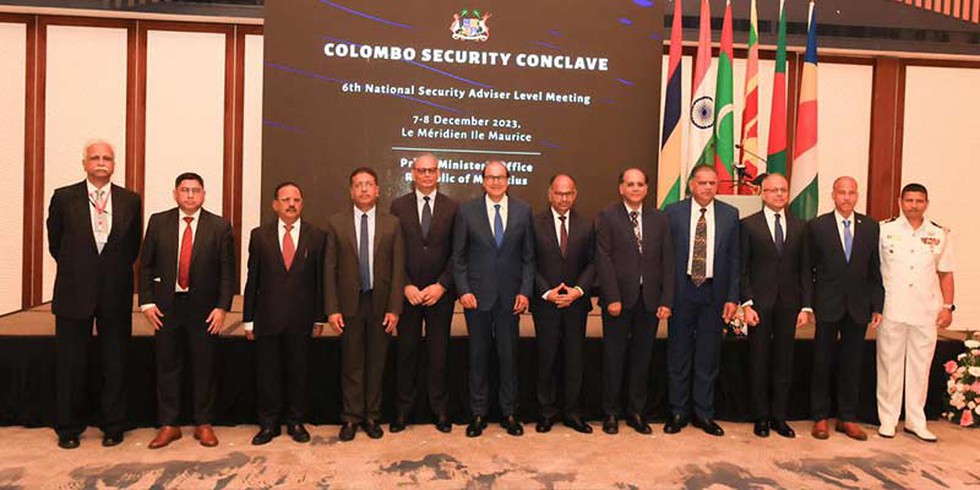
About Colombo Security Conclave (CSC):
- It is a regional security grouping comprising India, Bangladesh, Sri Lanka, Maldives, and Mauritius.
- The CSC’s core objective is to promote regional security by addressing transnational threats and challenges of common concern to the Member States.
- Origin:
- The CSC, initially known as the Trilateral for Maritime Security Cooperation,evolved out of trilateral meetings between National Security Advisors (NSAs) and Deputy NSAs from India, Maldives, and Sri Lanka, starting in 2011.
- It came to a standstill after 2014 due to rising tensions between India and the Maldives.
- Since its revival and re-branding as the CSC in 2020, Mauritius and more recently, Bangladesh were added as members of the grouping.
- Current members of CSC include India, Bangladesh, Maldives, Mauritius and Sri Lanka, while the Seychelles is an observer nation.
- CSC brings together NSAs and Deputy NSAs of the member countries.
- Cooperation under the conclave focuses on five pillars:
- maritime safety and security
- countering terrorism and radicalisation
- combating trafficking and transnational organised crime
- cyber-security and protection of critical infrastructure
- humanitarian assistance and disaster relief.
- Permanent secretariat: Colombo
9. Key Facts about Saora Tribe

About Saora Tribe:
- Saora is one of the ancient tribes of Odisha, which is also mentioned in the epics Ramayana and Mahabharata.
- They are called by various terms such as Savaras, Sabaras, Saura, Sora, etc.
- Though Odisha is the mainland for the tribe, a small number of people are also found in the states of Andhra Pradesh, Jharkhand, Madhya Pradesh and Assam.
- Language: They have their own native language called Sora, which is a Munda language, and they are one of the very few tribes of India that have a script for the language, Sorang Sompeng.
- The Saoras show their racial affinity to the Proto Australoid physical characters, which are dominant among the aborigines of Central and Southern India.
- Religion: Saoras follow an ingrained and intricate religion, having faith in and worshipping a number of gods and spirits, who they believe are the supreme controllers of their regular lives.
- They have unique art practices, religious customs, as well as a dying tattooing tradition called ‘Tantangbo’.
- The Saoras can be divided broadly into two economic classes:
- The Saoras of the plains (Sudha Saora) depending on their wet cultivation or wage earning and selling firewood.
- The Hill Saoras (Lanjia Saora) practice shifting and terraced cultivation on the hill slopes.
- Settlement:
- Saora villages do not conform to any particular type of settlement pattern.
- Houses are scattered and megaliths erected to commemorate dead kin are located close by.
- Village guardian deities like Kitungsum are installed at the entrance of the settlement.
- A typical house is a one-roomed thatched rectangular dwelling having stone and mud walls with a low roof and a high plinth front verandah. The walls are coloured with red earth.
10. Grom-E1 Missile
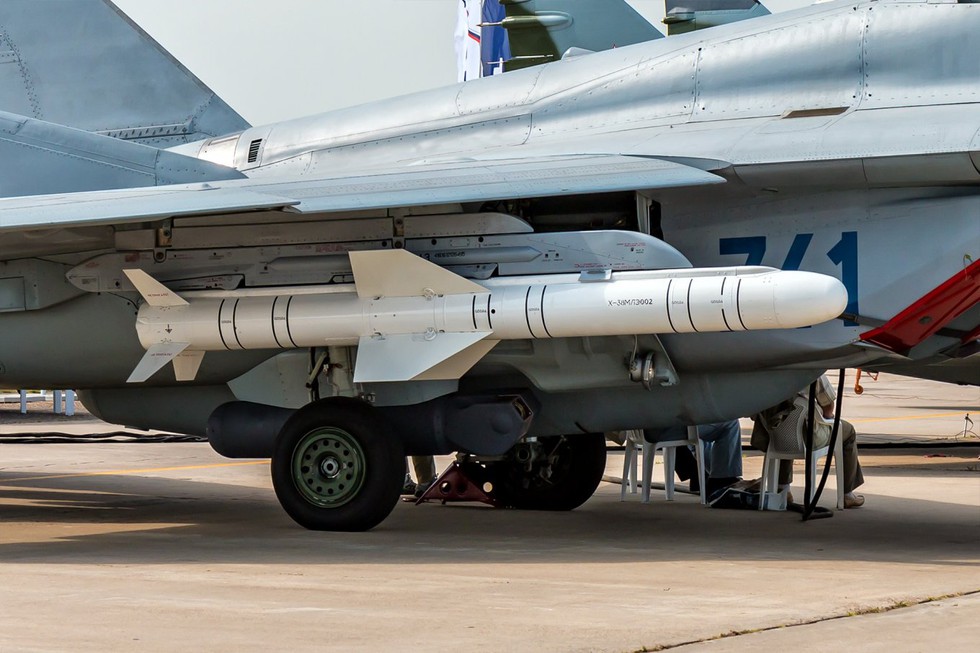
About Grom-E1 Missile:
- It is a sophisticated weapon created from the Soviet-era Kh-38 “air-to-surface” missile.
- It was developed by Russia and officially unveiled for the first time in 2018.
- It combines the features of both a missile and an aerial bomb.
- Features:
- Maximum Range: 120 km (75 miles).
- It features a high-explosive modular warhead equipped with a contact detonator.
- In addition to its standard configuration, there is a variant with a thermobaric design capable of detonating at high altitudes.
- The bomb itself weighs 594 kg (1,310 pounds), with a 315 kg (694 pound) warhead.
- The effectiveness of the Grom-E1 depends on the altitude and speed of the aircraft that launches it.
- For instance, its maximum range of 120 km (75 miles) can be achieved when dropped from an altitude of 12 km (7.5 miles) at a speed of 1,600 km per hour (994 mph). At an altitude of 5 km, the range decreases to approximately 35 km.
- This weapon can be deployed by Russian aircraft such as the MiG-35, Su-34, Su-35, Su-57, and certain helicopters.


























































































































































.png)
.png)
.png)
.png)
.png)


.png)
.png)
.png)





.png)
.png)






.png)
.png)
.png)
.png)
.png)
.png)
.png)
.png)
.png)

.png)







.png)
.png)


.png)
.png)
.png)


.png)

.png)
.png)





.jpg)

.png)
.png)


.png)

.png)
.png)
.png)

.jpg)

.jpg)


.png)

.png)
.png)
.png)
.png)
.png)
.png)
.png)
.png)
.png)
.png)




.png)

.png)





.png)
.png)
.png)
.png)
.png)
.png)
.png)
.png)
.png)
.png)
.jpg)
.jpg)

.png)
.png)
.png)
.png)
.png)
.png)
.png)
.png)
.png)
.png)
.png)
.png)
.png)
.png)
.png)
.png)
.png)
.png)
.png)
.png)
.png)
.png)



.png)
.png)

.jpg)
.jpg)


.jpg)
.jpg)
.jpg)
.jpg)
.jpg)

.jpg)








.jpg)
.jpg)
.jpg)
.jpg)
.jpg)

















.jpg)
.jpg)







.jpg)


















.jpg)
.jpg)






























































































.jpg)
.jpg)


























.jpg)

.jpg)










.jpg)








.jpg)




.jpg)










.jpg)


















.jpg)












































.jpg)














.jpg)
.jpg)
.jpg)





.jpg)

.jpg)
.jpg)





































































.jpg)


































.jpg)
.jpg)
















































.jpg)












.jpg)


.jpg)




.jpg)
.jpg)
.jpg)

.jpg)
.jpg)
.jpg)
.jpg)

.jpg)
.jpg)
.jpg)

.jpg)
.jpg)
.jpg)
.jpg)
.jpg)
.jpg)
.jpg)
.jpg)

.jpg)


.jpg)
.jpg)
.jpg)
.jpg)
.jpg)
.jpg)
.jpg)
.jpg)
.jpg)
.jpg)











.jpg)
.jpg)





.jpg)
.jpg)
.jpg)
























.jpg)
























.jpg)









.jpg)
.jpg)







.jpg)
.jpg)









































.jpg)
.jpg)
.jpg)
.jpg)
.jpg)

.jpg)
.jpg)
.jpg)
.jpg)
.jpg)


.jpg)
.jpg)
.jpg)
.jpg)
.jpg)

.jpg)
.jpg)
.jpg)
.jpg)
.jpg)
.jpg)
.jpg)
.jpg)
.jpg)
.jpg)
.png)

.png)
.png)

.png)
.png)
.png)
.png)


.jpg)
.jpg)

.jpg)
.jpg)
.jpg)

.png)
.png)
.png)
.png)
.png)
.png)
.png)

.png)
.png)
.png)
.png)
.png)
.png)
.png)
.png)
.png)
.png)





































































-min.png)



.png)




.png)








































